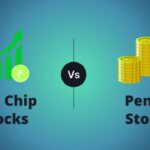Knowing the difference between equity and commodity investments is crucial for anyone who would like to create a diversified and strong portfolio. Equities denote a stake in a company and return value in terms of capital appreciation and dividends. Commodities, on the other hand, are tangible goods like gold, oil, agricultural products, or industrial metals that are traded globally.
Each asset class behaves differently based on market conditions, economic cycles, and investor sentiment. In this guide, we will break down these differences and explain how each can play a role in your investment strategy.

What is Equity?
Equity investments mean buying the shares of a company, and you own part of it. When you make an equity investment, you earn from the expansion and profitability of the company. The major characteristics of equity investments are:
- Capital Appreciation: The value of your shares can increase over time as the company grows.
- Dividend Income: Many companies distribute a portion of their earnings to shareholders as dividends.
- Voting Rights: Equity holders often have a say in company decisions through voting at shareholder meetings.
- Market Volatility: Equity prices can be volatile and are influenced by company performance, market sentiment, and economic conditions.
Equities are widely traded on stock exchanges, and the performance of an equity investment is generally reflected through indicators such as price-to-earnings (P/E) ratio, dividend yield, and total growth rate.
What is Commodity?
Commodity investments are the buying and selling of physical commodities like precious metals, energy commodities, agricultural products, and industrial metals. Unlike investing in a company where you have a stake or ownership, with a commodity investment, you are directly exposed to the price fluctuations of the underlying commodity. Some of the important features are:
- Intrinsic Value: Commodities are real, tangible goods with inherent value.
- Inflation Hedge: Many commodities, especially gold and oil, are used as hedges against inflation because their prices tend to rise with increasing price levels.
- Futures and Options: Commodities are often traded through futures contracts and options, offering opportunities for speculation and hedging.
- Supply and Demand Dynamics: Prices are driven by global supply and demand, geopolitical tensions, weather conditions, and other macroeconomic factors.
- Volatility: Commodity prices can be highly volatile due to rapid changes in market dynamics, making them both an opportunity and a risk.
Key Differences Between Equity and Commodity
Knowledge of the difference between equity and commodity investment is important in effective portfolio management. Some of the key differences include:
Ownership vs. Physical Asset
- Equity: Investing in stocks means buying ownership in a company, which comes with a claim on profits and voting rights.
- Commodity: Investing in commodities means trading physical goods or their derivatives, without any ownership rights in a company.
Return Sources
- Equity: Returns are generated from capital appreciation and dividends, and they reflect the performance of the underlying company.
- Commodity: Returns are driven by price fluctuations in the underlying commodity, often influenced by global supply-demand imbalances and external factors.
Risk Factors
- Equity Risk: Market volatility, company performance, and economic cycles can lead to fluctuations in stock prices.
- Commodity Risk: Commodity prices are affected by factors such as weather, geopolitical events, and changes in supply chains, which can lead to extreme volatility.
Investment Horizon
- Equity: Typically suited for long-term investors willing to ride out market fluctuations and benefit from compounding returns.
- Commodity: Often used for short-term trading or as a hedge against inflation; volatile in the short run but can offer significant long-term hedging benefits.
Market Behavior
- Equity: Stock prices are influenced by corporate earnings, management decisions, and market sentiment.
- Commodity: Prices tend to be influenced by macroeconomic factors, such as global demand, supply disruptions, and economic policies.
Pros and Cons: Equity vs. Commodity Investments
Equity Investments
Pros:
- Ownership in companies that can generate dividends and capital growth.
- Historically strong long-term returns.
- Diversification across sectors and industries.
Cons:
- Subject to market volatility and economic cycles.
- Can be affected by company-specific risks like management quality and competitive pressures.
- Requires thorough research to choose quality stocks.
Commodity Investments
Pros:
- Acts as a hedge against inflation.
- Provides diversification as commodity prices often move independently of equity markets.
- Opportunities for short-term gains through futures and options.
Cons:
- High volatility due to external factors like geopolitical events and natural disasters.
- Typically, no dividend income, only capital gains.
- Requires a good understanding of global market dynamics and supply-demand factors.
Final Thought
Both equity and commodity investments are important components in building an adequately diversified portfolio. Equities provide potential long-term capital growth and income from dividends, fueled by the innovation and growth of businesses. Commodities act as an inflation hedge and give diversification because of their distinct price drivers. Knowing the contrast between these two asset classes will give you the power to effectively allocate your investments and manage risk in accordance with your financial objectives and market view. Whether you are inclined more towards equity due to its growth aspect or go for commodities to hedge, a well-balanced approach that takes both into consideration can build a strong portfolio over the long run.
Frequently Asked Questions (FAQ)
Q1. What is the main difference between equity and commodity investments?
A: Equity investments involve owning shares in a company, thus benefiting from corporate growth and dividends. Commodity investments involve trading tangible goods or their derivatives, with returns driven by price fluctuations in the raw material.
Q2. Which asset class is better for long-term growth?
A: Historically, equities have delivered strong long-term returns due to capital appreciation and dividend income, though they come with market volatility. Commodities can hedge against inflation but may be more suitable for short-term strategies.
Q3. How do economic conditions affect these investments?
A: Equities are closely tied to company performance and economic cycles, while commodities are influenced by global supply-demand dynamics and macroeconomic factors, such as inflation and geopolitical events.
Q4. Can I invest in both equities and commodities?
A: Yes, diversifying your portfolio by investing in both asset classes can help reduce risk and improve overall returns by balancing different market conditions.
Q5. What should I consider when choosing between equity and commodity investments?
A: Consider your investment horizon, risk tolerance, market knowledge, and financial goals. Diversifying across both asset classes may offer a balanced approach to managing risk and capturing growth.











